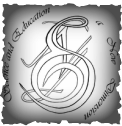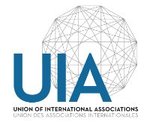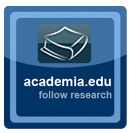Science and Education a New Dimension
Iss. 241. 2020.
M. Berezhna, K. Lozovska Stages of terms and professionalisms translation (based on metallurgical texts)
https://doi.org/10.31174/SEND-Ph2020-241VIII72-01
Abstract. The authors discuss in the article three stages of work with terms and professionalisms in metallurgical texts translated from English into Ukrainian. We also consider specifics of rendering abbreviations and translator’s false friends. The difficulties faced by the translator and ways to overcome these difficulties are identified in the paper. It is established that for adequate reproduction of professional vocabulary it is necessary to not only possess the general knowledge of the languages being studied, but also the knowledge of background and profession, as well as readiness for constant research work.
Keywords: terms, professionalisms, translator’s false friends, abbreviations, metallurgical texts, technical translation.
M. Berezhna, K. Lozovska Stages of terms and professionalisms translation (based on metallurgical texts)
N. S. Isaieva, O. H. Bespala The Urban Image of Shanghai in the Prose of Chinese Neo-sensualist Writers of the 30-40s of the 20th Century
https://doi.org/10.31174/SEND-Ph2020-241VIII72-02
Abstract. The article analyzes the peculiarities of the image of Shanghai in the stories of Chinese Neo-sensualist writers Liu Na’ou, Shi Zhecong and Mu Shiying. It is shown that the Shanghai school of Neo-sensualism is a fundamental movement of Chinese literary modernism of the first half of the XX century, the hallmark of which is the urban theme and original artistic techniques. The article demonstrates that the image of Shanghai is realized in the texts of Neo-sensualists as an urban background, a personalized witness to modernist drama or an active participant in events. The authors use an innovative technique of psychological description, as well as cinematic techniques – images of scenes in three-dimensional projection, montage, dynamic description, creating a contrast of light and darkness. In conclusion, the authors of the article argue that the Shanghai Neo-sensualist writers not only laid the groundwork for the development of Chinese modernism, but also established an urban tradition in Chinese literature of the twentieth century.
Keywords: Сhinese Neo-sensualism, Shanghai school, urban image, psychologism, audio-visual image, montage.
N. S. Isaieva, O. H. Bespala The Urban Image of Shanghai in the Prose of Chinese Neo-sensualist Writers of the 30-40s of the 20th Century
А. Kаrасh Transformation of phytomorphic motifs in the art world of poets of the nineties
https://doi.org/10.31174/SEND-Ph2020-241VIII72-03
Abstract. The article attempts to comprehensively analyze the transformation of phytomorphic motifs in the Ukrainian poetry of the nineties. It has been determined that poets of the nineties often prefer building the author’s myths. Peculiarities of neomythological plot creation and multidimensional artistic reality have been outlined. It has been also stated that the «trichotomous model of the motive» (according to A. Tymchenko) made it possible to trace the phenomena of «humanization», «spiritualization», timelessness, the state of being «out of space».
Keywords: motive, poetry of the 1990s, author’s myth, neomythologism.
А. Kаrасh Transformation of phytomorphic motifs in the art world of poets of the nineties
O. I. Kobchinska Transcultural Philosophy in Amin Maalouf’s Novel Balthasar’s Odyssey
https://doi.org/10.31174/SEND-Ph2020-241VIII72-04
Abstract. The study aims to highlight philosophic and transcultural aspects in the novel Balthasar’s Odyssey (2000) by a Franco- Lebanese writer Amin Maalouf that are implied in the protagonist’s travel. In order to classify and illustrate them several theories are used, namely the concept of Mediterranean centrism (D. Durishin), heterotopia (M. Foucault), professional stranger (A. Khatibi), and the Whole-World (É. Glissant). It is concluded that the protagonist of the novel tends to bridge the West and the East as two different cultural areas and, at the same time, acquires a new transcultural consciousness in the result of a voyage through these territories appearing as a translator of Amin Maalouf’s vision as a travelling cosmopolite writer.
Keywords: cultural dialogue, heterotopia, the Mediterranean centrism, odyssey, transcultural philosophy.
O. I. Kobchinska Transcultural Philosophy in Amin Maalouf’s Novel Balthasar’s Odyssey
O. L. Kozachyshyna, A. V. Mosiichuk Feminitives in Modern Ukrainian Newspaper Discourse
https://doi.org/10.31174/SEND-Ph2020-241VIII72-05
Abstract. The given research focuses on the study of modern Ukrainian newspaper discourse analyzed from the standpoint of the femini- tives usage. As the result of the analysis carried out on the basis of the newspapers “Mirror of the Week”, “Ukrainian Week” and “Day” of the period 2017-2018 (662 issues) 10573 feminitives formed by suffixation were singled out. The quantitative analysis of the given units made it possible to establish the most typical word-building models of feminitives formation as well as to trace some peculiarities of their contextual functioning in modern Ukrainian newspapers.
Keywords: feminitives, gender equality, mass media, modern Ukrainian language.
O. L. Kozachyshyna, A. V. Mosiichuk Feminitives in Modern Ukrainian Newspaper Discourse
Y. I. Kulinska Diary genre in the context of modern Ukrainian military prose (based on the works of M. Mathios "Private diary. Maidan. War…", A. Kurkova "Diaries of the Maidan", O. Mamaluya "Military diary", etc.)
https://doi.org/10.31174/SEND-Ph2020-241VIII72-06
Abstract. The article considers the genre of the diary in the context of modern Ukrainian military prose. During the Revolution of Dignity and the war in Donbass, such publications became one of the most popular in society. The genre of the modern diary is eclectic, it combines the description of current historical events with one’s own thoughts, the hero’s experiences, his posts on social networks, etc. At the same time, these author’s diaries are a document of time. Such prose can be considered as a text of memory, and as a psychological self-therapy, and as a confessional genre.
Keywords: diary, genre, existential discourse, “memory text”.
Y. I. Kulinska Diary genre in the context of modern Ukrainian military prose (based on the works of M. Mathios “Private diary. Maidan. War…”, A. Kurkova “Diaries of the Maidan”, O. Mamaluya “Military diary”, etc.)
Yu. V. Litkovych The emotional influence of media texts due to language redundancy
https://doi.org/10.31174/SEND-Ph2020-241VIII72-07
Abstract. The article focuses on the study of redundant phrases (pleonasms) in media texts discourse within the framework of pragmatic studies. The paper shows the peculiarities of pleonastic phrases in news and advertising. Different functions of advertising which correspond to the functions of pleonastic phrases are distinguished. The pragmatic value of redundant phrases (pleonasms) and their implication, influence on the target audience is studied.
Keywords: redundancy, pleonasms, semantically similar words, pragmatic potential.
Yu. V. Litkovych The emotional influence of media texts due to language redundancy
T. V. Lunyova Ekphrasis and metaekphrasis in Julian Barnes’s essayistic account of Édouard Manet’s paintings of the execution of Emperor Maximilian: a cognitive poetic analysis
https://doi.org/10.31174/SEND-Ph2020-241VIII72-08
Abstract. The cognitive poetic approach is applied in the article to examine the semantic relationships between ekphrastic and metaekphrastic contexts in Julian Barnes’s essayistic account of Édouard Manet’s paintings of the execution of Emperor Maximilian. The criterion of the explicit verbal statement that a work of visual art is described in the text was employed to identify ekphrastic contexts. Metaekphrastic contexts were distinguished based on their semantic connection with ekphrastic descriptions and absence of the explicit verbal remark that they render what is depicted in the painting. It has been revealed that ekphrastic and metaekphrastic contexts in Barnes’s essay have strong semantic links with each other and ensure semantic multidimensionality of the text thorough their bidirectional semantic connections.
Keywords: ekphrasis, metaekphrasis, essay, visual art, cognitive poetics.
T. V. Lunyova Ekphrasis and metaekphrasis in Julian Barnes’s essayistic account of Édouard Manet’s paintings of the execution of Emperor Maximilian: a cognitive poetic analysis
O. G. Mikhailova Leges frumentariae (corn laws) and kinds of social bread in ancient Romans: linguocultural aspect
https://doi.org/10.31174/SEND-Ph2020-241VIII72-09
The article is dedicated to the history of Corn Laws and the evolution of the meaning “social bread”. Based on the material of Latin names for grain and flour, the regularities in the formation of terms designating social bread were revealed, nomination strategies were defined, liaison between the level of bakery business development and the change in bread assortment was established, the role of metaphor and metonymy in building up the names of the privileged kinds of bread was determined.
Keywords: corn laws, names of bread, metaphor, metonymy, Latin language.
O. G. Mikhailova Leges frumentariae (corn laws) and kinds of social bread in ancient Romans: linguocultural aspect
Ye. I. Plakhotniuk Blend-dictionaries in a semiotic-cognitive perspective: an Active learner’s construction-combinatory thesaurus «TRAVELLING»
https://doi.org/10.31174/SEND-Ph2020-241VIII72-10
Abstract. This article introduces a novel kind of a blend-dictionary, namely, an active learner’s construction combinatory thesaurus (ALCCT). The current typological classifications of lexicographical sources are challenged by the emerging hybrid and blend-dictionaries integrating several lexicographic genres. The present research offers a semiotic-cognitive model underlying such integration and, thus, systematizing their typological features. The study aims at outlining the key components of ALCCT based on the model and provides some examples of lexicographic blending from the ongoing project on the compilation of ALCCT «TRAVELLING».
Keywords: dictionary, blend-dictionary, combinatory thesaurus, cognitive lexicography, lexicographic semiotics, lexicographic typology.
Ye. I. Plakhotniuk Blend-dictionaries in a semiotic-cognitive perspective: an Active learner’s construction-combinatory thesaurus «TRAVELLING»
N. Rarenko Postmodernist Literature and Theatre From the Perspective of Intermedial (Meta)reference
https://doi.org/10.31174/SEND-Ph2020-241VIII72-11
Abstract. The article explores the phenomenon of theatricality as a form of intermediality in postmodernist literature, with metareference viewed as an essential verbal means of its manifestation. Linguistic poetics and intermediality theory serve as the theoretical and methodological basis of elucidating verbal and textual manifestations of theatricality in postmodernist literary texts. From this perspective, the use of theatre-related metareferences in postmodernist fiction is explicated as a form of intermediality, which accentuates textual presence and imitation of theatre as a distinct medium in literary text. In this paper, the focus on intermedial metareferences is twofold — 1) analysis of metareferences that specifically mention or discuss media-specific qualities of theatre as a media-form; 2) discussion of metareferences to specific theatrical works (both real and fictitious). Special focus is given to eliciting manifestations of theatrical metareferences in such post- modernist novels as The Black Prince by Iris Murdoch and The Magus by John Fowles. The phenomenon of theatricality is discussed with regard to its stylistic potential to demonstrate an intermedial convergence between literary text and theatre as media forms. It is revealed that the manifestations of metareferences to theatrical art juxtapose the boundaries of reality and artifice, bring to the foreground the effect of theatricality.
Keywords: metareference, intermediality, postmodernism, linguistic poetics, theatricality.
N. Rarenko Postmodernist Literature and Theatre From the Perspective of Intermedial (Meta)reference
N. Rudakova The theme of Cossacks in Ukrainian folk non-fiction prose
https://doi.org/10.31174/SEND-Ph2020-241VIII72-12
Abstract. Originality of genre nature of Ukrainian folk prose about the cossacks is considered, and the specificity of art modeling of Cossack in the heroic epic are considered. The basic motives, plot trends and poetic details that make an artistic image cossack in national consciousness is analized. The article examines the origins of the Cossacks and the Ukrainian folk tradition. It was discovered that the domestic culture more or less had piled characters and storylines for the representation of the Cossacks.
Keywords: Ukrainian folk prose, the Cossacks, heroics, the Cossack character.
N. Rudakova The theme of Cossacks in Ukrainian folk non-fiction prose
H. Stashko The effect of stylistic repetition in English-language advertising texts
https://doi.org/10.31174/SEND-Ph2020-241VIII72-13
Abstract. The article focuses on stylistic repetition, its effect and types in English-language advertising texts. Special attention is paid to anaphora and epiphora reinforced by alliteration and assonance, which appear the most popular and widely used stylistic devices contrib- uting to emotional feedback and motivating consumers to buy the product while anadiplosis and epanalepsis are viewed quite scare and difficult to remember.
Keywords: stylistic repetition, anaphora, epiphora, anadiplosis, epanalepsis, alliteration, assonance, advertising text, brand slogans, manipulation technique.
H. Stashko The effect of stylistic repetition in English-language advertising texts
O. A. Virnyk The Functioning of Anthroponyms in Turkish Poetry in the Early 20th Century
https://doi.org/10.31174/SEND-Ph2020-241VIII72-14
Abstract. The article is devoted to the research of anthroponyms in the language of Turkish poetry at the beginning of the 20th century and the functions they perform in the literary text. The research is carried out on the material of the poetry of Turkish poets of the early 20th century (E. B. Koryuurek H. F. Ozansoy, Yu. Z. Ortach, O.S. Orkhon, F. N. Chamlibel). Over the past few years, the focus of linguistic research has been on vocabulary that reflects the cultural and ethnic characteristics of a particular nation, its understanding and perception of the world. Anthroponyms are an important linguistic-stylistic means of national or regional identification of characters and often characterize the level of national linguistic consciousness of denotates, the analysis of which is in the field of topical issues of cultural linguistics. The names of people are simultaneously in the linguistic and cultural planes, they store in themselves certain social information (nationality, religion, origin, etc.), in addition, they often have a certain emotional load, associations with real people who once lived, or with mythical characters known or popular among the carriers of this ethnoculture. In Turkish poetry of the early 20th century, vocabulary marked with a characteristic cultural component is often found, the knowledge of which allows the reader to understand and fully feel the flavor of the Turkish language and culture. In this study, as an example of such vocabulary, anthroponyms and their functions in a literary text are analyzed. The article provides relevant examples of anthroponyms, their translation, sources of origin, historical prerequisites for the formation of such names, as well as an analysis of the connotations they have for the Turkish recipient. In poetry of the early twentieth century anthroponyms are largely represented by the names of the characters of classical literary works (Leila, Majnun, Asli, Kerem, Shirin and Farhad), the names of the Turkic rulers (Oguz Khan, Sultan Mehmed II Fatih, Abdulmejid), the names of the Byzantine emperors (Constantine, Yustami) Ottoman Empire (Zaganos Pasha, Turhan Bey, Ulubatly Hasan, Karadzha Pasha), the names of famous figures (Nedim, Fuzuli, Nefi, Sinan), among which the most frequent is Ataturk, names associated with religions (Yunus, Ali, Abel and Cain, Khidr, Ilyas, Jesus, Muhammad, Moses, etc.), as well as symbolic names and ethnonyms. As a result of research on the material of poetry, it was proved that anthroponyms in Turkish poetry of the early 20th century perform various functions in a literary text, reflect the value priorities of speakers of the Turkish language and culture, and are means of reconstructing the worldview of the Turkish ethnos. Studying anthroponyms and symbols that are encoded in them, we achieve an understanding of a huge layer of contextual information, phenomena that contain the cultural and historical specifics of the nation, which is a fundamental factor in understanding national consciousness, mentality and provides undeniable assistance in building a constructive dialogue with native speakers of the Turkish language.
Keywords: cultural and linguistic competence, onomastics, proper names, anthroponyms, onomastic space, Turkish poetry, intertextuality, cognitive base, ethnos, national consciousness.
O. A. Virnyk The Functioning of Anthroponyms in Turkish Poetry in the Early 20th Century







